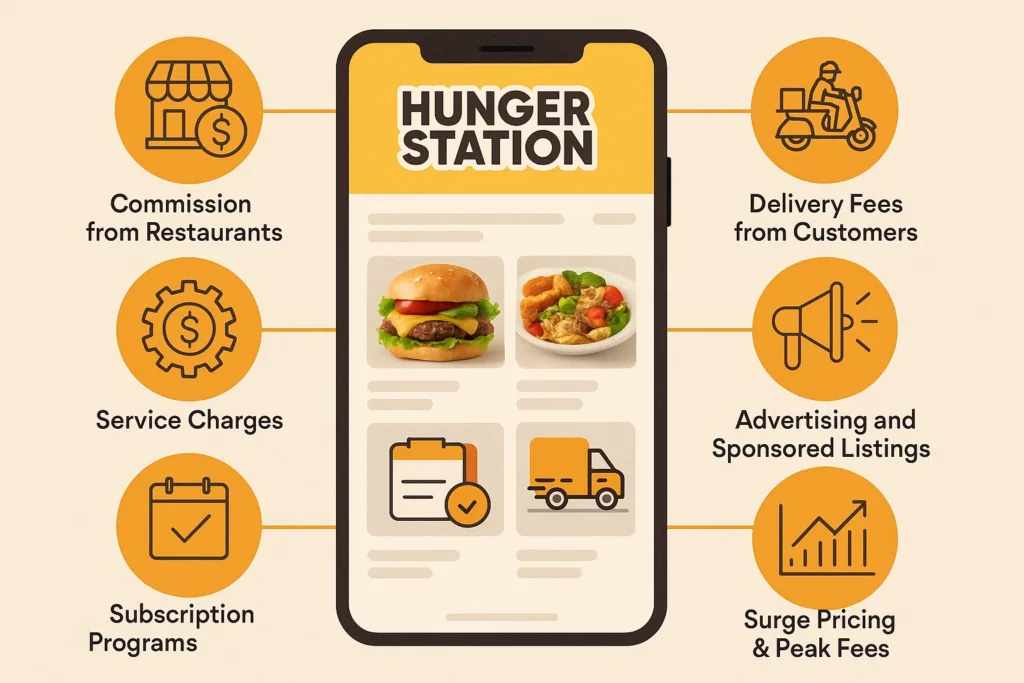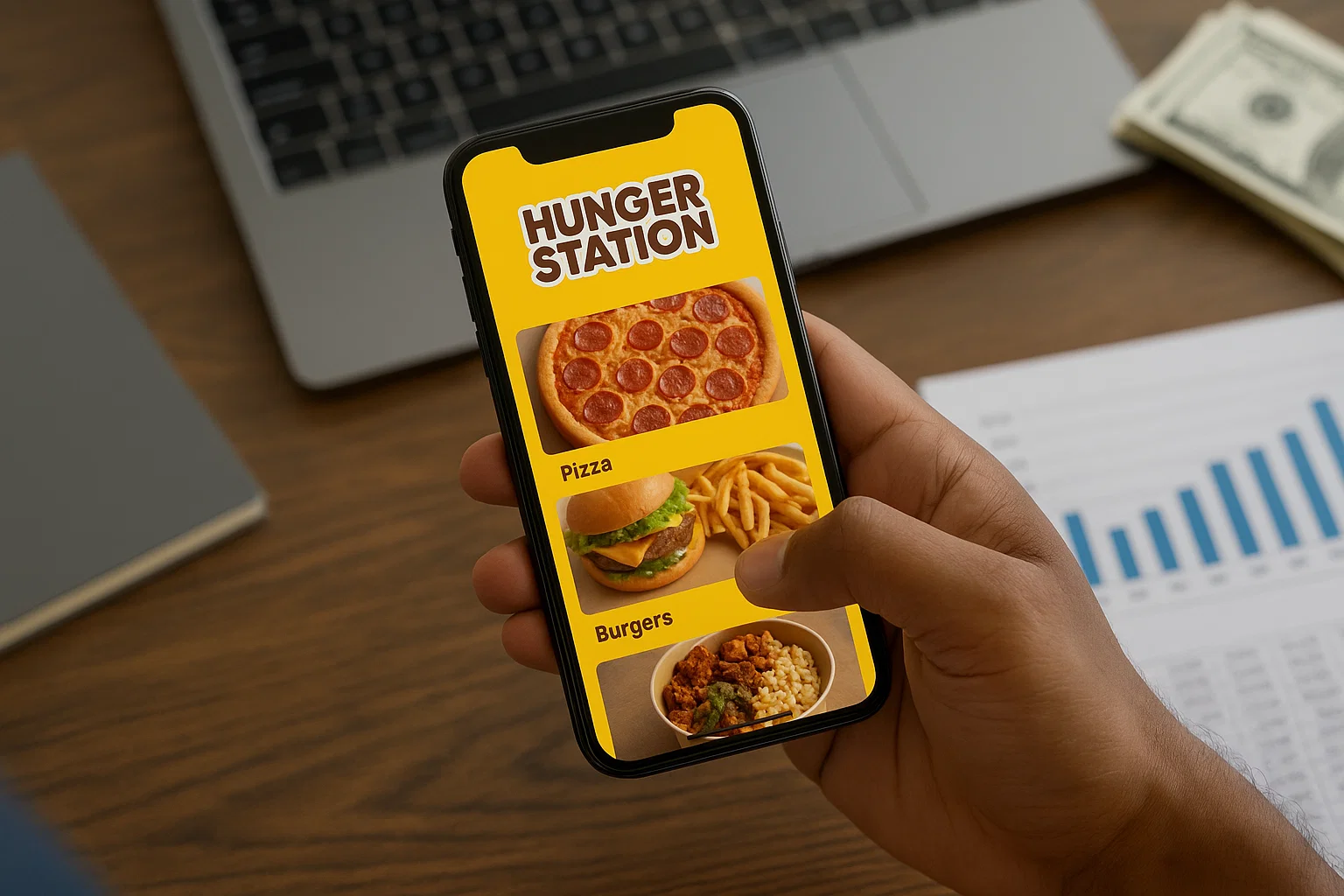HungerStation is one of the leading online food ordering and delivery platforms in Saudi Arabia. Since its inception, the platform has grown into a dominant force in the Middle East’s foodtech landscape — offering users a seamless way to browse local restaurants, place food orders, and get them delivered quickly.
With a user-friendly app, hundreds of partnered restaurants, and robust logistics, HungerStation has become a daily-use service for millions. Backed by Delivery Hero, it has leveraged cutting-edge tech, strategic partnerships, and market localization to create a powerful and profitable business model in a region where digital ordering is booming.
This blog breaks down how HungerStation makes money, why its revenue model thrives in 2025, and how startups can launch their own HungerStation-style food delivery platform with Miracuves‘ ready-made clone solution.
Scale faster and smarter with a leading food delivery app company that blends innovation, technology, and growth strategies.
How HungerStation Makes Money
HungerStation operates a multi-sided revenue model that capitalizes on every touchpoint in the food delivery ecosystem — from restaurants and customers to delivery drivers and advertisers. Here are the key revenue streams that fuel its profitability:
- Commission from Restaurants – HungerStation charges a percentage-based commission on each order placed through the platform.
- Delivery Fees from Customers – Customers pay a delivery charge, which varies by distance, restaurant, and demand.
- Service Charges – Additional convenience or service fees are added to cover app maintenance and support.
- Advertising and Sponsored Listings – Restaurants can pay to appear in premium spots on the app, increasing visibility and orders.
- Subscription Programs – Loyalty or subscription models (like free delivery plans) may be offered for a recurring fee.
- Logistics-as-a-Service (LaaS) – In some cases, HungerStation offers its delivery fleet and logistics to other brands or services.
- Surge Pricing & Peak Fees – During high-demand hours, dynamic fees may apply to both customers and restaurants.

Each of these income sources contributes to a highly optimized monetization strategy designed to scale with the growing appetite for online food delivery across the GCC region.
Launch your own food delivery platform quickly with the best HungerStation clone scripts in 2025 designed for scalability and success.
Detailed Breakdown of Revenue Channels
Commission from Restaurants
This is the core of HungerStation’s revenue. The platform typically charges restaurants a commission ranging from 20% to 30% per order. The more orders processed through the app, the more HungerStation earns — without ever cooking a meal or owning inventory.
- Who Pays? Partnered restaurants.
- Why It Scales? Commission increases with order volume, and it’s a low-risk, high-reward model.
Delivery Fees from Customers
Customers pay a flat or distance-based delivery fee with each order. These fees often vary depending on the restaurant’s location, the rider’s availability, and real-time demand. A portion goes to the delivery partner, and HungerStation keeps the rest.
- Who Pays? End users at checkout.
- Why It Scales? Added on every transaction; helps cover logistics.
Service Charges
Beyond delivery, a small service or convenience fee is added per order (usually SAR 1–3). This non-commission income helps cover technology infrastructure and customer support, especially in low-margin zones.
- Who Pays? Customers.
- Why It Scales? Applied automatically and often goes unnoticed due to its small value.
Advertising and Sponsored Listings
Restaurants can pay for visibility — whether it’s appearing in top search results, banner ads, or homepage slots. This native advertising drives more traffic to the restaurant and opens a strong non-transactional income stream for HungerStation.
- Who Pays? Restaurants, cloud kitchens, and franchise brands.
- Why It Scales? High-margin, repeatable income with no dependency on order volume.
Subscription Programs
While not always publicly promoted, platforms like HungerStation often explore subscription plans offering free deliveries or exclusive deals for a monthly or annual fee. This helps generate predictable, recurring revenue.
- Who Pays? Power users and frequent customers.
- Why It Scales? Encourages retention and creates recurring income.
Logistics-as-a-Service (LaaS)
HungerStation may offer its fleet management and delivery resources to third-party brands that don’t have their own riders. This B2B service turns logistics into a monetizable product.
- Who Pays? External vendors or smaller food businesses.
- Why It Scales? Utilizes existing resources to generate additional revenue.
Surge Pricing and Peak Hour Charges
During high-demand periods, the app may increase service or delivery fees. This dynamic pricing model maximizes revenue during peak hours and holidays while managing demand.
- Who Pays? Customers during rush times.
- Why It Scales? Maximizes profit when user intent is highest.
From seamless ordering to real-time tracking, HungerStation redefines convenience—explore the HungerStation app features that drive success.
Why This Revenue Model Works in 2025
The HungerStation revenue model is especially effective in 2025 due to a mix of evolving consumer habits, mobile-first market dynamics, and tech-enabled monetization strategies. Here’s why it continues to thrive:
Massive Shift to Online Food Ordering
Post-pandemic, consumers in the Middle East have fully embraced digital convenience. With rising smartphone penetration and young, tech-savvy populations, food delivery apps like HungerStation have become a daily utility. This fuels repeat orders — the lifeblood of commission and fee-based models.
Increased Acceptance of Delivery & Service Fees
Customers are more comfortable than ever paying small extra charges for delivery speed and convenience. HungerStation’s ability to apply service fees and surge pricing without deterring users boosts its profitability.
AI-Driven Personalization & Dynamic Pricing
AI and data analytics enable HungerStation to customize restaurant recommendations, delivery slots, and even prices. These micro-optimizations increase both order frequency and average order value — directly impacting revenue.
Growth of Cloud Kitchens and Sponsored Listings
2025 has seen a rise in delivery-only kitchens eager to gain visibility. HungerStation capitalizes by offering them premium placement through sponsored listings — a lucrative advertising stream that costs nothing to scale.
Subscription Models Driving Retention
Monthly plans offering benefits like free delivery or exclusive deals are gaining traction. They create predictable, recurring revenue while reducing churn — a win-win in a competitive market.
Multi-Sided Monetization Strategy
By earning from both ends — users and restaurants — while leveraging fleet logistics and advertising, HungerStation diversifies risk and scales efficiently in regional markets like KSA, Bahrain, and Kuwait.
Can Startups Replicate HungerStation’s Revenue Model?
Yes — and now it’s easier than ever.
While HungerStation’s model looks seamless on the surface, replicating it from scratch involves complex backend integrations, real-time delivery logistics, secure payment systems, and strong partnerships with local restaurants. Most startups don’t have the luxury of years of development and millions in funding.
That’s where Miracuves steps in.
Our ready-made HungerStation Clone is built for founders and digital agencies who want to enter the food delivery space fast — without sacrificing customization or monetization power. Here’s what you get:
- Commission & fee engines out-of-the-box
- Restaurant/vendor onboarding and dashboards
- Real-time tracking and delivery fleet management
- Multi-language, multi-currency support
- Loyalty, promo, and referral systems
- Banner ad and sponsored listing modules
- Easy scalability for one city or many
Whether you’re targeting a niche local market or scaling across multiple regions, Miracuves gives you the tech stack HungerStation uses — with none of the build-from-scratch delays.
The HungerStation Clone by Miracuves is priced at $3,299, tailored for food, grocery, and convenience delivery startups.
Empower your region with a multi-vendor platform for seamless ordering and delivery.
Go live in just 3–6 days with complete source codes.
Startups save time and cost by choosing our HungerStation clone over custom development, while scaling smarter by following our developer’s guide to building a HungerStation-like app with a full-stack approach.
Conclusion
HungerStation’s revenue model is a textbook example of how to monetize a food delivery platform from multiple angles — commissions, service fees, advertising, subscriptions, and even third-party logistics. It’s smart, scalable, and perfectly aligned with modern consumer behavior in 2025.
For founders and digital brands looking to enter the foodtech arena, the good news is: you don’t have to build this model from scratch.
With Miracuves’ HungerStation Clone, you get a plug-and-play solution tailored for fast launch, full monetization, and seamless user experience — ready to compete from day one.
FAQs
How does HungerStation generate revenue?
HungerStation earns money through restaurant commissions, customer delivery fees, service charges, sponsored listings, subscriptions, and third-party logistics. Each stream contributes to a highly diversified and scalable business model.
Is HungerStation profitable in 2025?
While exact financials are confidential, HungerStation benefits from strong market presence, high order volume, and multiple revenue channels. Its strategic model allows for sustainable growth and increasing profitability across the GCC region.
What are the main income sources for HungerStation?
Key income sources include order commissions (20–30%), delivery and service fees, in-app advertising, subscription plans, and partnerships with cloud kitchens and vendors.
Can startups use the same revenue model as HungerStation?
Yes — but building such a complex system from scratch is costly and time-consuming. With Miracuves’ HungerStation clone, startups can adopt the same monetization strategy with reduced risk and faster time-to-market.
Does Miracuves offer a HungerStation clone with monetization features?
Absolutely. Miracuves provides a fully functional HungerStation clone with built-in commission structures, fee management, ad modules, fleet tracking, loyalty tools, and more — ready for monetization from day one.
Related Articles :-
- Revenue Model of Foodpanda: How the Food Delivery Giant Makes Money
- Revenue Model of Delivery Hero: Inside the Business Behind the Global Food Delivery Giant
- Revenue Model of Goldbelly: How It Serves Gourmet Food with a Side of Profits
- Revenue Model of Just Eat: How the Food Delivery Giant Monetizes Every Order








